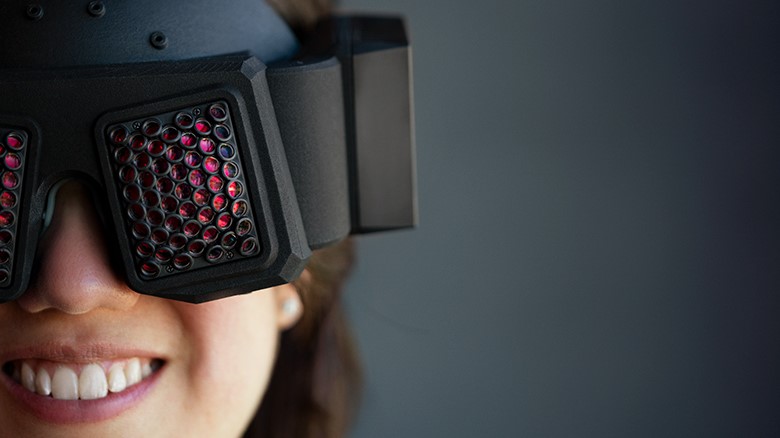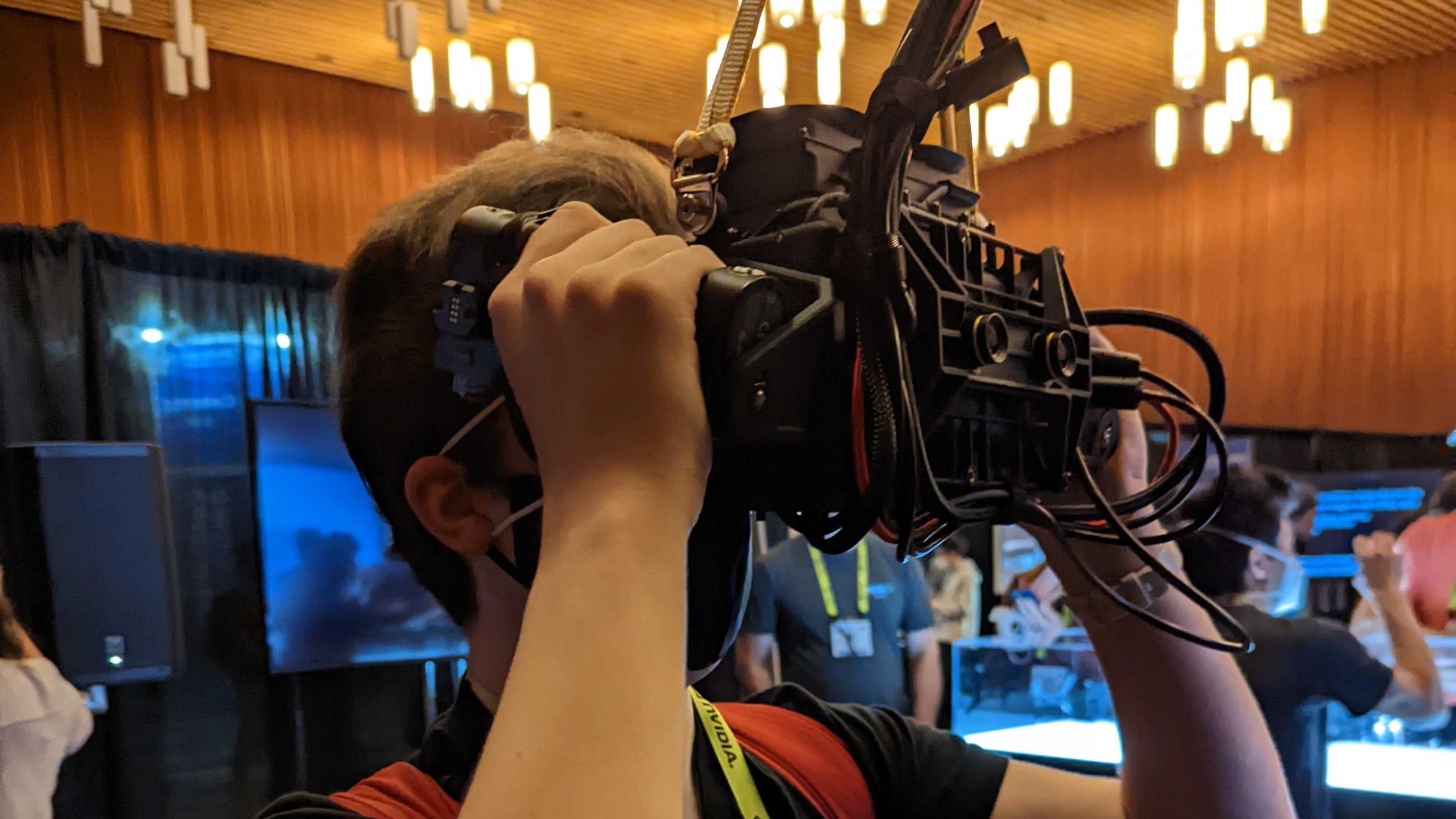Meta has two award-winning VR headsets you'll never get to try
Flamera and Butterscotch Varifocal wowed the crowds

Two of Meta’s VR headsets have come away with prizes at the North America Siggraph 2023 conference, but you’ll likely never get to try either of them out.
That’s because these aren’t headsets that will be commercially available like the Meta Quest Pro or the upcoming Meta Quest 3. Instead, these award-winning VR devices are prototypes that only Meta Reality Labs testers and people lucky enough to attend events like Siggraph 2023 will be able to test out.
The first prototype – Butterscotch Varifocal – won the show’s Audience Choice award and is a follow-up to a previous Butterscotch prototype Reality Labs developed. Butterscotch's display boasted an incredibly high angular resolution of 56 pixels per degree. This is significantly higher than any other VR headset (the Oculus Quest 2 offers only 21 pixels per degree), and at 60 pixels per degree, the human eye can no longer see the screen door effect on displays (where dark lines appear between pixels).
Butterscotch Varifocal takes these displays and goes one step further. It’s designed to fix VR headsets' focal distance issue – as the screen is always a fixed distance from the wearer’s face. Reality Labs has done this by combining eye-tracking with a display that moves. Depending on where you look the screen will physically move further away or come closer to you, and Meta says this creates a “more natural, realistic, and comfortable experience.”
David Heany from UploadVR got to try it out and said that when the system was toggled on VR objects “remained sharp when brought incredibly close to [his] eyes.” Apparently, it made the virtual feel more real, adding that for some of the demo objects he’d “go as far to say they felt entirely real.”
Meta's other prototype – Flamera – was named Best in Show. This is a prototype that’s helping Meta look into new approaches to passthrough for mixed reality. Headsets like the Meta Quest Pro use cameras to record the real world, and then that video feed is fed to your headset display, with adjustments made by the headset’s chipset to correct some perspective distortions. These corrections aren’t perfect, however, and this system will never mimic actually using your eyes to view the world.
Flamera – a portmanteau of flat and camera – uses a unique system of lenses and apertures (along with some data reconstruction) to create a much closer approximation of what our eyes would naturally see. This complex camera setup is responsible for the bug-eye-like design of the headset. For a more in-depth description, you can check out Meta’s explanation on YouTube.
Sign up for breaking news, reviews, opinion, top tech deals, and more.
Puzzling Places’ Azad Balabanian wasn’t that impressed with it though, saying that the demo had a super-narrow field of view of around 30 degrees – the Quest 2 has a FOV of around 89 degrees for comparison. As such, you wouldn’t see much with the perspective correction passthrough.
Tech we may one day wear
Just because Meta will never release these headsets as consumer products doesn’t mean we won’t ever see the tech inspired by Flamera and Butterscotch Varifocal in a VR gadget that we can buy.
Meta has explained that these prototypes are intended to take one aspect of a VR system to the extreme, such as passthrough with Flamera, or high-dynamic range as we saw first-hand with Starburst (another prototype design) when we tested it out at Siggraph last year.
In doing this, Meta’s Reality Labs team can discover what factors most benefit immersion and enjoyment for VR users, and it can then use this information to decide which features future headsets should incorporate – and where to invest its research and development budget.

That said, we shouldn’t expect quite the same results from commercially available headsets. Case in point, the Starburst headset was so heavy it had to be suspended from the ceiling; it’s not something a person could wear like a Quest Pro. Designs will have to be simplified so that they can fit in the headset along with all the other components.
What’s more, we won’t see headsets using these designs any time soon. Simplifying the features Reality Labs likes best will take time – so don’t be disappointed when the Quest 3 (or even the Quest 4) has a stationary display and regular passthrough.
Want to pick up a headset you can actually use today? Check out these picks for the best VR headset.

Hamish is a Senior Staff Writer for TechRadar and you’ll see his name appearing on articles across nearly every topic on the site from smart home deals to speaker reviews to graphics card news and everything in between. He uses his broad range of knowledge to help explain the latest gadgets and if they’re a must-buy or a fad fueled by hype. Though his specialty is writing about everything going on in the world of virtual reality and augmented reality.

